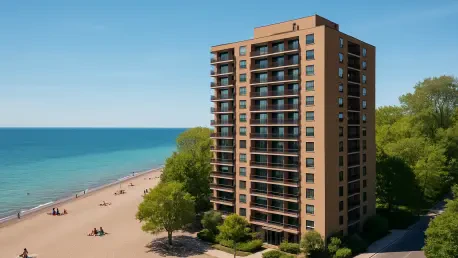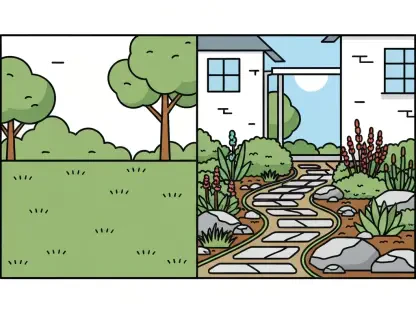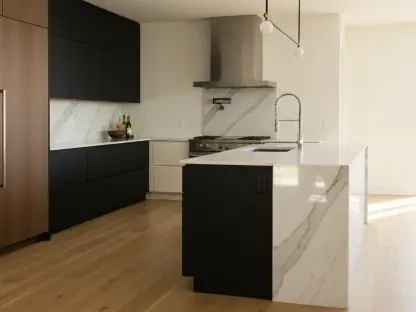In the heart of Toronto’s Beach neighborhood, a contentious debate is unfolding over a proposed 11-storey mixed-use residential building at the northwest corner of Queen Street East and Kingston Road, a site once home to the beloved Murphy’s Law pub, sparking significant discussion among residents, local officials, and urban planners. This development, put forward by SUD Group, challenges long-standing planning guidelines and raises questions about the balance between growth and preserving community character. With 216 rental units, parking spaces for vehicles and bicycles, and a promise of affordable housing, the project aims to address housing needs, yet its towering height—nearly double the approved limit—has ignited concerns about the future aesthetic and livability of the area. As the community prepares for a virtual consultation meeting scheduled for October 6 from 6:30 to 8 p.m., accessible via the City of Toronto’s online portal or by phone, the stage is set for a critical dialogue on whether this ambitious proposal aligns with the neighborhood’s vision.
Height Controversy and Planning Guidelines
The core of the debate surrounding the proposed development lies in its significant deviation from established planning rules for the Beach area. The Queen Street East Urban Design Guidelines, set in place over a decade ago, cap building heights at six storeys between Coxwell Avenue and Nursewood Road to maintain a cohesive, low-to-mid-rise streetscape. SUD Group’s plan for an 11-storey structure directly contradicts this limit, stirring unease among residents who value the neighborhood’s distinct, small-scale charm. The site, which includes addresses from 1684 to 1702 Queen St. E., also incorporates the vacant lot of a former hotel, long seen as an eyesore. While the developer argues that the design integrates a four-storey street wall to blend with the surrounding context, many question whether this compromise adequately respects the area’s character or simply serves as a superficial gesture to mask the building’s imposing height.
Adding to the tension, a six-storey building was previously approved for this location a few years back, but construction never commenced. Instead, SUD Group submitted the taller proposal earlier this year, citing shifts in market conditions and alignment with the City of Toronto’s more recent Mid-Rise Guidelines. This pivot has frustrated local stakeholders who feel that the developer is disregarding prior agreements and community input. The preservation of the historic CIBC bank building, once housing Murphy’s Law, offers some reassurance, yet it does little to quell concerns about the overall scale of the project. Beaches-East York Councillor Brad Bradford has publicly expressed disappointment over the sudden change, emphasizing that the near-doubling of height and more than doubling of unit count undermines earlier consensus. The clash between past approvals and current ambitions underscores a broader struggle in balancing urban densification with local expectations.
Community Perspectives and Policy Shifts
Beyond the specifics of height restrictions, the proposal highlights a deeper rift between evolving city policies and the desires of Beach residents. Toronto’s push for increased density to address housing shortages is evident in updated planning frameworks that encourage taller mid-rise developments in certain areas. SUD Group leans on this direction, asserting that their project reflects current municipal goals while offering an undisclosed number of affordable housing units as a community benefit. This aspect introduces a layer of complexity, as the promise of affordability could address pressing needs in a city grappling with escalating living costs. However, the lack of concrete details on how many units will be affordable leaves room for skepticism about the tangible impact of this commitment on the neighborhood.
On the flip side, many in the community view the developer’s reliance on newer guidelines as a convenient justification for overstepping established norms. The sentiment, echoed by Councillor Bradford in recent statements, is that such a dramatic shift from the approved six-storey plan risks setting a dangerous precedent for future projects along Queen Street East. Residents worry that approving an 11-storey structure could erode the area’s unique identity, transforming it into a corridor of high-rises that overshadow its historic and pedestrian-friendly vibe. The long-vacant state of the site, marked by fencing and neglect since the demolition of the former hotel, adds urgency to finding a resolution, yet there’s a palpable fear that haste might lead to a development that prioritizes profit over place. This divide between policy evolution and local preservation remains a central point of contention as the consultation meeting approaches.
Navigating Development and Heritage Balance
The proposed redevelopment at the former Murphy’s Law site encapsulates a quintessential urban challenge: how to accommodate growth while safeguarding a neighborhood’s heritage. On one hand, SUD Group’s argument for economic viability and alignment with contemporary planning trends carries weight in a city under pressure to expand housing stock. The inclusion of 216 rental units, alongside parking for 54 vehicles and 240 bicycles, signals an intent to cater to diverse resident needs in a transit-oriented area. Yet, the leap from a previously agreed-upon six-storey limit to an 11-storey design feels to many like a breach of trust, raising questions about whether developers can unilaterally reinterpret community standards to suit market demands.
Equally significant is the broader implication for Toronto’s Beach area, where similar conflicts between development and preservation are likely to recur. The virtual meeting on October 6 provides a pivotal opportunity for residents to voice their apprehensions and for officials to gauge public sentiment before decisions are finalized. The outcome of this dialogue could influence not only this project but also how future proposals are approached in balancing modern housing needs with the integrity of historic neighborhoods. As discussions unfold, it becomes clear that resolving such disputes requires careful consideration of both immediate community impacts and long-term urban planning goals. Moving forward, fostering transparent communication between developers, residents, and policymakers emerges as a crucial step to ensure that growth enhances rather than overshadows the unique fabric of areas like the Beach.









